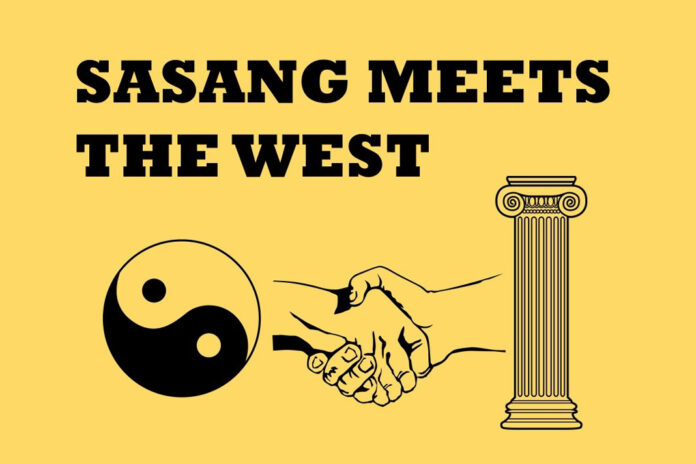The Western Personality Assessments Provide More Characteristics to Diagnose the Sasang Constitutions.
By David Lee L.Ac
Dr. Jema Lee’s neo-Confucian interpretation of the four constitutions set off a revolution in the world of East Asian medicine. His proof was the efficacy and reliability of the rearranged foods and herbal medicines for these body types.
Personality profiling by western thinkers has made the Sasang constitutions easier to diagnose. The long research on personalities, since Hippocrates circa 400 B.C. to the present, is now unified with the power of Sasang medicine. Because human beings are identical across the globe, the characteristics of constitutions can be conveniently identified. For 17 years, I had the opportunity to assess the constitutions in various races of people at my clinic in suburban Los Angeles.
Hippocrates premised that the imbalance of the four humors, Yellow Bile, Black Bile, Blood, and Phlegm caused disease. Physician Aelius Galenus (Galen) 129 – 216 AD converted the humors into Four Temperaments as climatic natures of hot-dry Choleric (Taeeumin), hot-damp Sanguine (Soyangin), cold-damp Phlegmatic (Soeumin), and cold-dry Melancholic (Soeumin, cold Taeumin).
William Marston, 1893-1947, a discoverer of a polygraph machine (lie detector) and a creator of Wonder Woman, found the emotions of people as Dominance (Taeeumin), Influence (Soyangin), Steadiness (Soeumin), and Conscientiousness (Soeumin, cold Taeumin).
David McClelland, 1917 – 1988, was a Harvard professor, whose research identified the three basic motivation types. Their primary motivations are caused by Power (Taeeumin), Achievement (Soyangin), and Affiliation (Soeumin and cold Taeeumin).
Merrill and Reid, 1950s, observed the external social styles rather than internal thought processes. The four social types are Driving (Taeumin), Expressive (Soyangin), Amiable (Soeumin), and Analytical (Soeumin, cold Taeumin).
Myers-Briggs, 1897-1980, created 16 personality types based on the works by the psychologist Carl Jung. Myers-Briggs Type Indicator MBTI uses pair opposites to determine Extrovert (E) or Introvert (I), Sensing (S) or Intuitive (I), Feeling (F) or Thinking (T), and Judging (J) or Perceiving (P). Taeeumins are ESTP, ISTP, ESTJ, and ISTJ. Soyangins are ESFP, ISFP, ENFP, INFP, ENTP, and INTP. Soeumins are ENFJ, INFJ, ENTJ, and INTJ. Cold Taeumins (Soeumin) are ESFJ, ISFJ, ESTJ, and ISTJ.
Big Five, 1950-present, is the most scientifically validated temperament assessment tool using five personality dimensions. Taeeumins are characterized by high Openness, high Conscientiousness, low Agreeableness, and low Neuroticism. Soyangins have high Openness low Conscientiousness. Soeumins have low Openness, low Conscientiousness, and high Agreeableness. Cold Taeumins (Soeumin) have low Openness, high Conscientiousness, and high Agreeableness. All constitutions have high and low Extraversion.
Jema Lee would be proud to see his medicine regularly practiced all over the world. With the increased ability to diagnose the Sasang constitutions, his 100-year prediction of it being in every household is now ready.
|
Four Constitutions (4체질) |
||||
|
Jema Lee |
Taeeumin |
Soyangin |
Soeumin |
Soeumin |
|
Hippocrates |
Yellow Bile |
Blood |
Phlegm |
Black Bile |
|
Unani Galen- Avicenna |
Choleric |
Sanguine |
Phlegmatic |
Melancholic |
|
hot and dry |
hot and wet |
cold and wet |
cold and dry |
|
|
David McClelland |
Power Need |
Achievement Need |
Affiliation Need |
Affiliation Need |
|
Merrill and Reid |
Driver |
Expressive |
Amiable |
Analytical |
|
William Marston |
D Driving |
I Influencing |
S Steadiness |
C Conscientious |
|
Big Five (OCEAN) |
Low Neuroticism High Open High Conscientious Low Agreeable |
High Open Low Conscientious
|
Low Open Low Conscientious High Agreeable
|
Low Open High Conscientious High Agreeable
|
|
Myers-Briggs |
ESTP ESTJ ISTP ISTJ
|
ENFP ENTP ESFP INFP INTP ISFP |
ENFJ ENTJ INFJ INTJ
|
ESFJ ESTJ ISFJ ISTJ
|

































